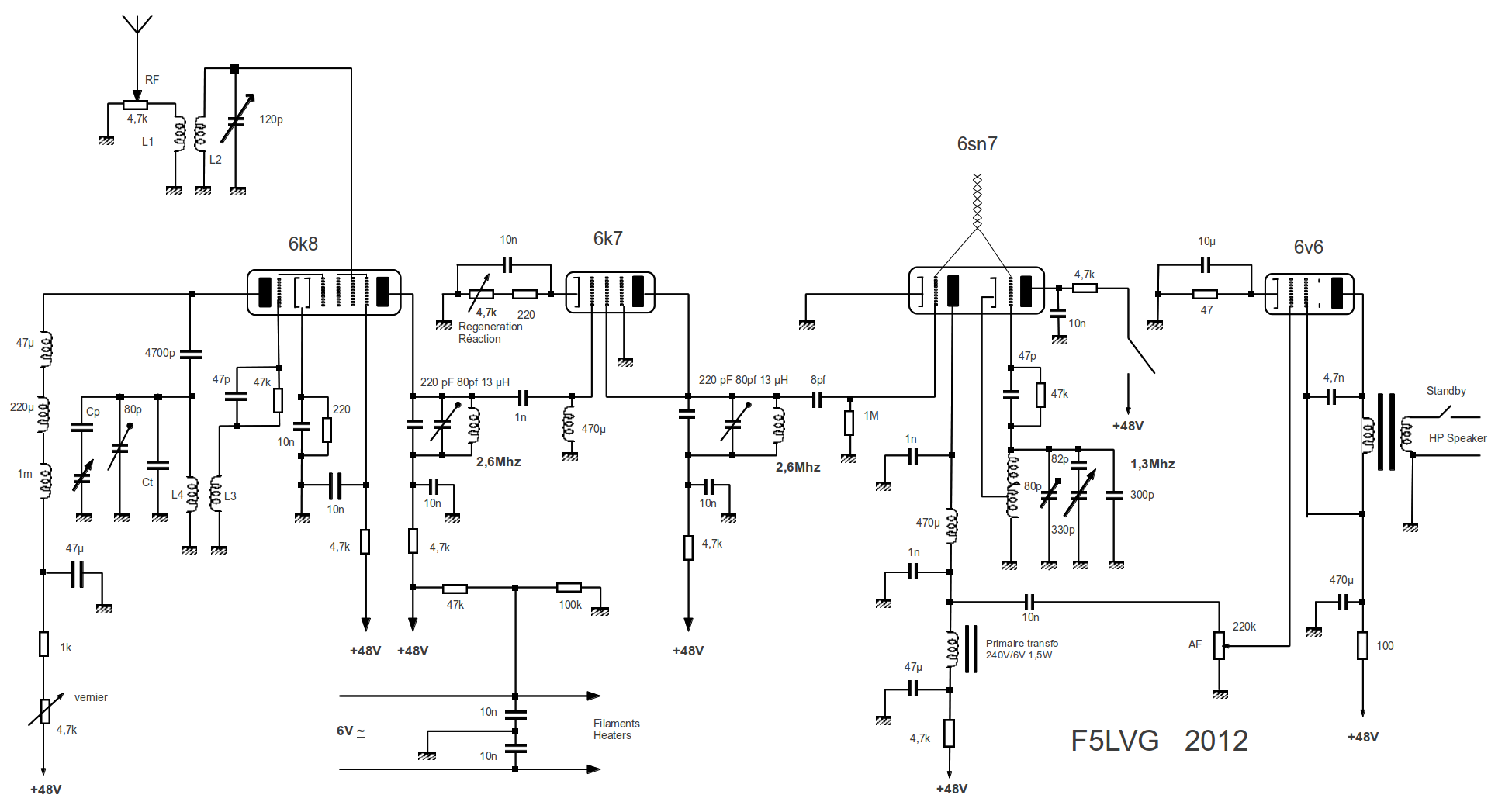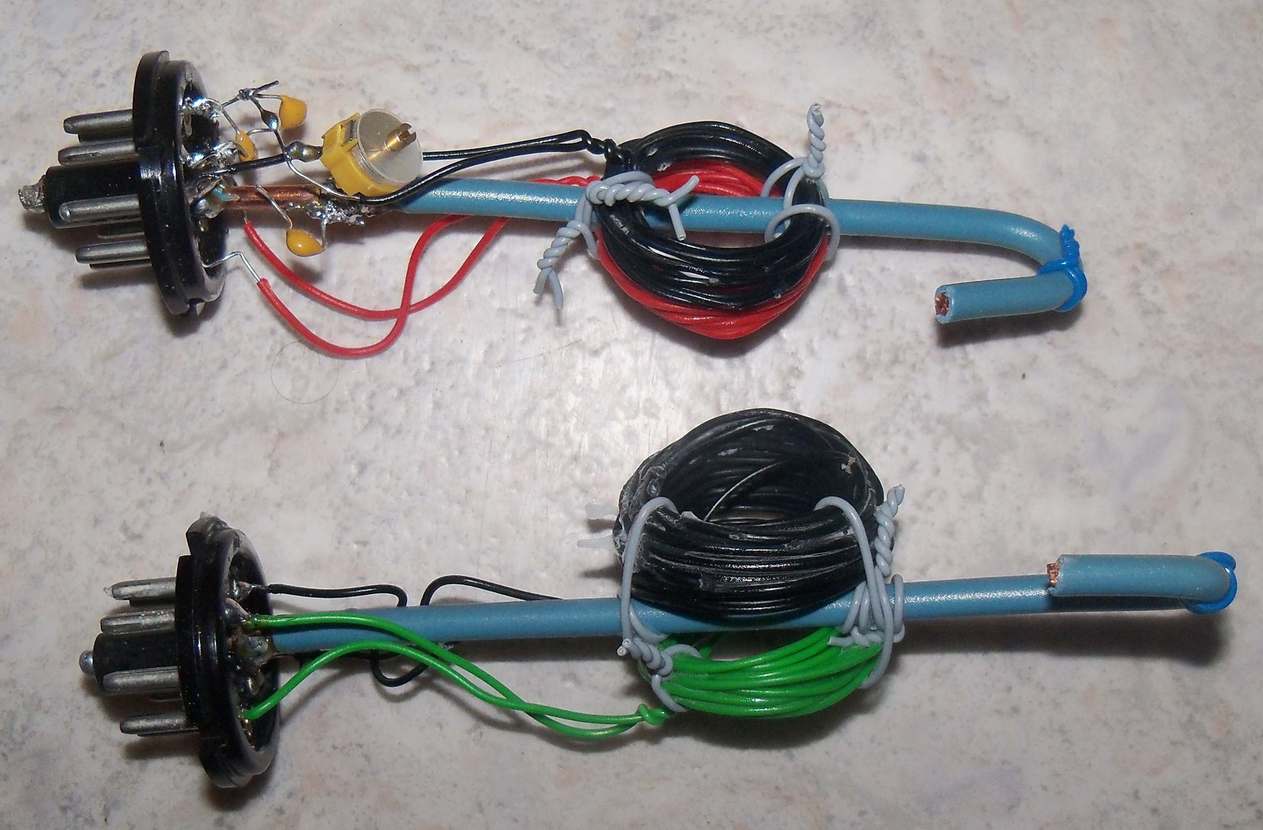4
tubes regenerative superhet 3.5 - 21.5 MHz

Why a regenerative superhet ?
1 Gain
Regeneration allows high gain, with a low number of electronic tubes.
2 Selectivity
Selectivity is better with a superheterodyne receiver compared to a TRF regenerative receiver because :
- Intermediate frequency is lower than the incoming frequency.
- There is a higher number of resonant circuits.
- For CW and SSB the input signal can be in the middle of the bandwidth if there is a BFO. If a regenerative stage is used to demodulate code or SSB, the signal occupies half of the bandwith.
3 Stability
- The frequency stability is better with a superheterodyne receiver than with a TRF receiver because of the absence of interaction between the antenna and the oscillator (no hand capacitance).
- The stability of regeneration is better because there is no link between the regenerative stage and the antenna. Furthermore, the regeneration frequency is lower than the input frequency.
4 Amplification
The amplification is better with a superheterodyne receiver than with a TRF receiver because a higher number of stages and the low IF frequency.
5 Noise
There is no common-mod hum, a plague of regenerative receiver above 10 MHz.
The 4 tubes:
1 6K8G : mixer
2 6K7G : regenerative IF amplifier (2600 kHz)
3 6SN7GT : grid detector and BFO (1300 kHz)
4 6V6GT : AF amplifier
Plug-in coils without coil forms (low loss).
Choice of the intermediate frequency:
Low : for good selectivity.
High : to avoid image frequency interference and to decrease the pulling effect. Furthermore, the image frequency of amateur bands mustn't be in broadcast bands. In this receiver a frequency of 2600 kHz was choosen.
B tension:
The high tension is only 48V. This voltage is less dangerous than higher voltage. It easy to make a regulated power supply. With 48V, the audio output is similar to the audio output of a small pocket receiver.
Regeneration :
Regeneration is easily obtained by using the 6K7G connected as a triode.
Frequency of the BFO:
The frequency of the BFO is half of the frequency of the regenerative stage to avoid a great interaction between the BFO and the regenerative stage. This explains the frequency of 1300 kHz for the BFO. Without interaction between the BFO the the regenerative stage, it is possible to obtain a great selectivity for SSB and CW. I measured an attenuation of 17 dB for the opposite sideband.
Remarks :
- Above 10 MHz, the input thank circuit must have a very high L/C ratio to minimise mixer noise. With a very high L/C ratio, atmospheric noise (when the band is open) is higher than the converter noise with a 2x10m dipole antenna.
- A RF attenuator is mandatory to decrease cross-modulation on the lower bands.
- I used single resonant circuits for IF instead of transformers because it is quite impossible to adjust the tuning and the regeneration. On the other hand, alignment of single tune circuits is very easy.
73
Olivier Ernst F5LVG

Coils 22mm diameter
|
Band |
L1 |
L2 |
L3 |
L4 |
Ct |
Cp |
|
3.5 Amateurs |
20 |
40 |
10 |
10 |
100 |
33 |
|
6 |
10 |
20 |
10 |
10 |
/ |
82 |
|
7 Amateurs |
10 |
20 |
10 |
6 |
197 |
16 |
|
7 |
10 |
20 |
6 |
6 |
33 |
33 |
|
9 |
6 |
12 |
5 |
5 |
100 |
33 |
|
14 Amateurs |
6 |
12 |
4 |
4 |
220 |
33 |
|
15 |
6 |
12 |
4 |
4 |
100 |
33 |
|
18 Amateurs |
5 |
9 |
6 |
3 |
180 |
8 |
|
21 Amateurs |
5 |
9 |
6 |
3 |
82 |
12 |
FI 25 turns
BFO 40 turns
tap 8
RX SW Shortwave 6k8 6k7 6sn7 6v6 ham hamradio SSB CW AM 80 40 20 17 15 m
2012